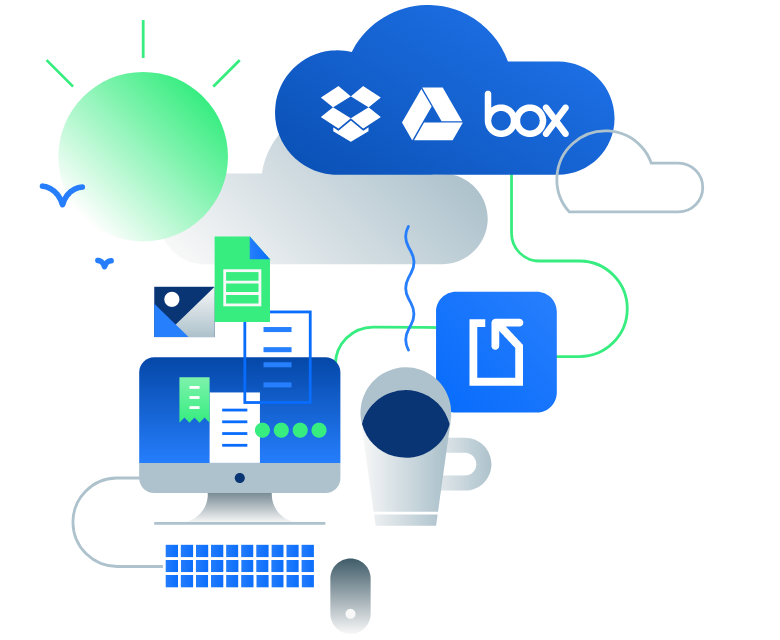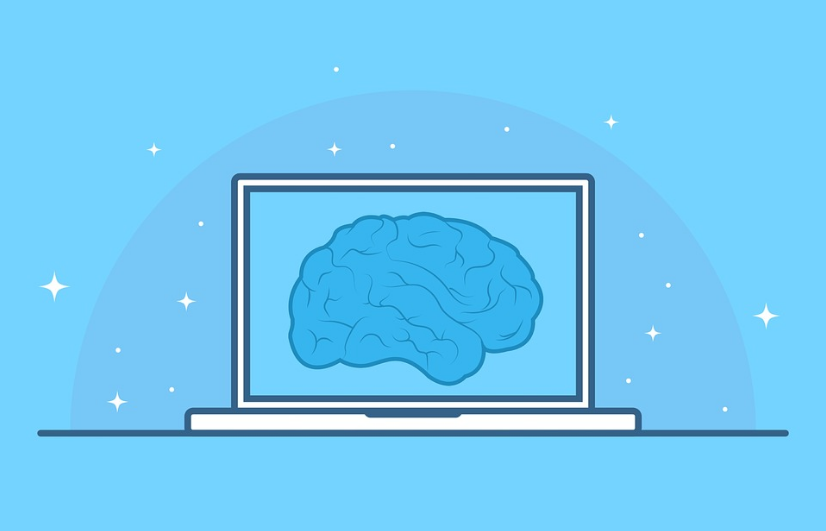Now is a good time to reevaluate your document management processes and look for ways to streamline them. As the volume of documents processed by businesses keeps increasing, automation technologies will continue to evolve to address that problem. In fact, document automation trends are going to become more and more prevalent in the years to come due to their numerous benefits, from reduced costs to time savings and data accuracy.
In this article, we are going to explain five trending forms of document automation you don’t want to miss out on in 2025. Let’s go.
What is Document Automation?
Document automation refers to the use of software to process received documents and create new documents. While this concept isn’t exactly new, the last few years have seen an upsurge in cloud-based software tools that allow you to:
- Generate new documents
- Assemble documents into one set
- Store documents in your storage solution
- Manage documents
The most common use case is populating a document template with data to generate personalized documents like sales proposals or employment agreements.
Incidentally, chances are you are already using some form of document automation like invoice automation.
Companies can implement document automation in many areas of their business:
- Procurement
- Sales
- Finance
- Legal
- HR
- Etc.
Likewise, there are many industries that can greatly benefit from automation like the legal industry, healthcare, logistics, finance, and insurance to name a few.
So how can your business benefit from document automation? Let’s find out.
What Are the Benefits of Document Automation?
Document automation is a solution designed to respond to the problem of processing countless documents, from contracts to proposals and so much more.
For example, law firms can use automation to produce legal documents much faster than if they were to do it manually. Likewise, a sales team can use document automation to promptly create sales presentations without having to search for information in different sources. Doing so would take a lot of time and slow down the sales process. By handling these tasks, document automation massively increases employee’s productivity.

So automation has clear benefits in terms of saving time and effort. But there’s more to it. Here is why document automation is going to become a must-have:
- Reduce the costs of manual document processing
- Reduce the time needed to create new documents
- Prevent the costs of human error
- Ensure better compliance
- Increase employee productivity and morale
- Serve customers faster
- Better capture and retain knowledge
Like other forms of automation, document automation is not meant to replace humans but rather relieve them from the tedium of manual tasks. That way, they can focus on high-value work that is better suited to people, like speaking to prospects and serving customers.
The Top Document Automation Trends in 2025
Document automation is growing at a rapid pace. There are five trends that are going to become more and more prevalent in 2025:
Trend #1: Document Parsing
Manual data entry is still a source of stress and frustration for countless organizations. It takes a lot of time to locate documents, examine the contents, then enter information into a system. This repetitive process causes costly data entry errors. That’s why more and more companies are turning to document parsing to automate this process.
Document parsers can identify data in documents of various formats (PDF, Word, Excel, JPEG, TXT, etc.) and extract it with near-perfect accuracy. The user can extract data from both digital and scanned documents.
By using a document parser, you will:
- Reduce the processing time from hours to minutes
- Prevent data entry errors
- Enable employees to focus on more valuable tasks
- Improve decision-making with 100% accurate data
- Search for specific data in your database easier
- Improve document security
If document parsing sounds like a solution to your data entry issues, Docparser will help you automate that process. Docparser uses Optical Character Recognition and instructions called Parsing Rules to identify and extract data like names, numbers, or tables, and extract it in a structured state.

But the automation process doesn’t stop there. You can download your parsed data or send it to a web-based application that you use like Salesforce. This integration feature helps you fully streamline your data entry process so you can use your data right away.
Trend #2: Email parsing
Email parsing works like document parsing, with the difference being that the former focuses on extracting information contained within emails. Much of the data businesses store in their databases comes by way of email, so using an automation tool that can accurately extract that data is the best way to process emails.
The right email parser will not only extract the subject line and body of an email, but attached files as well. You will benefit from using an email parser if you always receive emails with documents like:
- Invoices
- Purchase orders
- Contact forms

Using an email parser will help you save much time, effort, and money. Furthermore, you will automate several of your workflows by having data seamlessly travel from email attachments to your systems.
Quick note: If you routinely receive documents by email, consider trying Mailparser, the companion app of Docparser that focuses on email parsing. It’s free to try out and there is no coding required.
Trend #3: Handwriting Recognition
Handwriting Recognition (HWR) combines Advanced Document Capturing and Machine Learning to recognize and extract handwritten text in documents like cheques or medical forms. This technique can identify text whether it was written on paper document or a touchscreen.
HWR apps separate handwritten characters from each other then interpret each one to figure out the character it resembles the most. They can even memorize a person’s writing over time to improve the recognition output.

There are many possible applications for handwriting recognition:
- Extracting handwritten data
- Translating handwritten content to another language
- Spotting keywords
- Converting text to speech
- Identifying text present within images.
The industries that will benefit from handwriting recognition include:
- Education: students can turn handwritten notes into digital documents
- Healthcare: preventing mistakes and health risks caused by illegible handwriting
- Field services: technicians can write information by hand and have it accurately recognized and sent to the company’s database
Note that DocparserAI, our AI-powered parsing engine, is capable of recognizing handwritten information and extracting it accurately.
Trend #4: Intelligent Document Analysis
Also called Intelligent Document Processing, this subset of document automation combines two forms of AI, Natural Language Processing (NLP) and Machine Learning to analyze the contents of documents (most of which have unstructured data) and emerge insights from them.

Intelligent Document Analysis, or IDA for short, consists of a number of techniques, each suited to a specific goal. Below are some of them:
Named Entity Recognition
Named Entity Recognition is a type of IDA that relies on Natural Language Processing (NLP) to detect and categorize entities mentioned in a text. An entity is any word or group of words that belong to a category of things with similar meaning. Examples of entities include names of persons, locations, organizations, products, time, monetary values, etc. This IDA technique analyzes unstructured data in documents to extract relevant data and classify it by entities. This removes the need to wade through said documents manually.
Keep in mind, however, that NER only recognizes entities and does not verify whether a statement is true or not.
Organizations can use NER in different areas:
- Financial professionals can extract data that helps assess profitability and credit risk
- Customer support teams can categorize requests, questions, and complaints to assign them to the right departments
- News publishers can automate content suggestions on their websites
Sentiment Analysis
Sentiment analysis is an NLP technique that identifies an opinion about a topic or entity mentioned in a document or piece of content. It then categorizes it as positive, negative, or neutral. For example, a review that describes a product as “underwhelming” will be categorized as negative.
Using this technique helps to reveal opinions in their various expressions:
- Adjectives
- Negation
- Ratings and other level-based assessments
- Implied opinions
- Slang
- Emojis
- Etc.
The goal of sentiment analysis is to unveil the general sentiment towards a company or product on social media, review websites, and the internet at large. You can use it to find key customer issues, assess brand reputation, or track the evolution of sentiment over time.
While this technique is continuously evolving, it is still far from being entirely accurate since it must process and recognize the complexities and subtleties of language and the context in which a sentiment is expressed.
Text Similarity
Text similarity can detect duplicates and near-duplicates in a document or parts of it. This technique combines lexical similarity (similar words) and semantic similarity (similar meaning) to find similarities. Using text similarity can help detect plagiarism or match job descriptions with skills mentioned in applications.
Text Classification
This Machine Learning technique classifies documents into predetermined categories based on words, sentences, headings, metadata, and even images. This makes it much easier to organize documents by topics or languages as well as automatically route documents to the right team.
Text classification can be divided into two types. The first type is “Classes”, where a document is assigned to one of two classes. The most common example is emails that are classified into “spam” and “not spam” according to a set of spam triggers. The second type is “Labels”. You create a number of labels and the automation tool will analyze a given document to assign one or several labels to it.
Summarization
Summarization consists of analyzing text to create a coherent summary that retains the key points. You can use this technique to either:
- Extract key sentences to form a summary without modifying the original text
- Paraphrase and condense key sentences to form a summary
As you can imagine, summarization can help make content more digestible for people who lack the time to read it thoroughly.
Benefits of IDA
Businesses can use IDA to automate certain tasks as well as improve decision-makers with data-driven insights. The most notable benefits are:
- Saving time and money
- Improving data accuracy
- Providing better customer service
- Scaling the creation of documents
- Improving products and services by uncovering patterns
According to CIO, 80-90% of data generated by businesses is unstructured. Intelligent Document Analysis, along with other forms of automation, will continue to help businesses make sense of data and derive actionable insights from it.
Trend #5: Contract Automation
Contract automation is the practice of generating, storing, and managing contracts via software and without the involvement of legal professionals. The most common use cases of automated contracts include non-disclosure agreements and employment offer letters.
Traditionally, an employee will take a legal document template, fill out the details, and send it to the legal team for approval before the involved parties sign it. This process is slow and results in individuals having different versions of the same document.

By automating the creation of contracts, companies are able to:
- Save the time and effort usually dedicated to creating contracts manually
- Prevent bottlenecks in contract workflows
- Mitigate the risk of errors
- Keep one version of each contract
- Make contracts easy to access
- Reinforce the security of legal documents
- Scale their business
The insurance industry is taking the lead in the adoption of contract automation due to its efficiency and profitability. Other industries are following this trend as well, so we expect it to become commonplace in 2025 and beyond.
Invest in Document Automation to Streamline Your Business
These five document automation trends are growing each year, since the need for automating tedious tasks is continuously growing.
In fact, automating workflows is becoming a huge driver of competitiveness. You can speed up the sales process, shave off costs, provide better customer service, and a lot more. Any business looking to achieve that will have to implement document automation.
If your team struggles with entering data, consider using a document parser. Docparser will help you automate the data entry process to save time and prevent human error. Start a free account today and try document parsing for yourself.
No credit card required.




